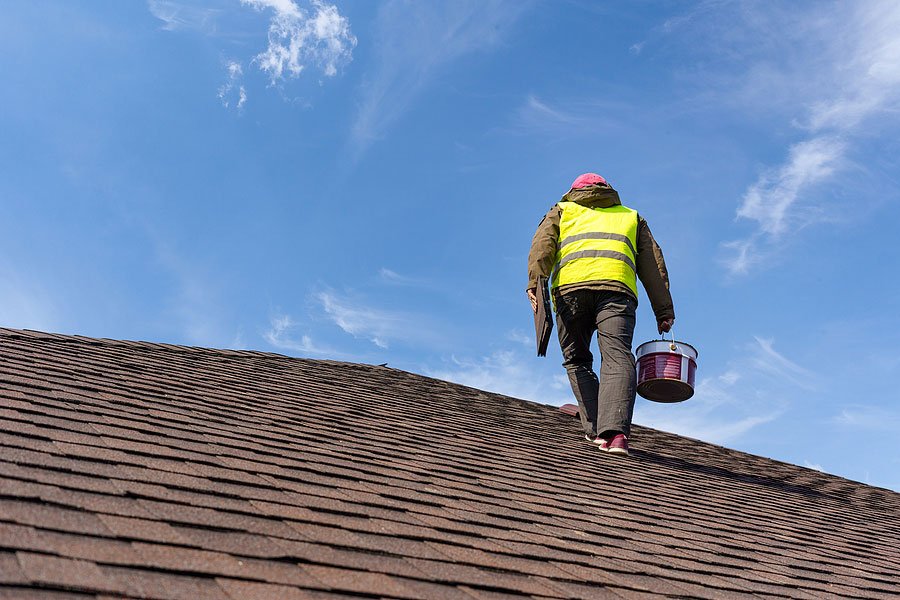A roof inspection is a process by which roofers examine the roof of a house or other building for any issues that may be causing roof leaks or roof damage.
The roof inspection process involves several steps and should be completed by an experienced roofer. The first step to take when performing a roof inspection is to measure the pitch, or incline angle, of the roof. Roof pitch is important because it determines how much work must be done in order to ensure that all parts of the roof are accessible during the inspection. It also helps determine what tools will need to be used during this process such as straight ladders and safety harnesses.
Roof Inspection Process
After measuring the pitch of the roof, it is important to determine where roof leaks have been occurring in order to determine if roof damage has occurred. There are a few ways roofers can do this, such as by using a roof leak detector or checking for damaged roof shingles. Another step in the roof inspection process is to take a closer look at any eroded roof sheathing and roof rafters.
After roofers have taken a closer look at these possible problem areas, they can use several tools such as flashlights and screwdrivers to check the exterior of the roof for potential problems with nails, siding, decking, and skylights that should be repaired. Taking routine roof inspections like this will help homeowners find small issues before they become large ones that require extensive repair work.
What is a roof inspection and why should you care
A roof is in constant contact with the exterior conditions of its environment, roof leaks can occur when an opening in the roof surface allows water to enter the roof system. Since most roof systems are not perfectly tight, it is best to have a roof inspection performed by a professional roofing contractor on at least an annual basis with more inspections being conducted during periods of extreme weather or roof wear.
Energy Efficiency
Rooftop equipment is vital to efficient energy usage and peak home performance, but improper installation and routine neglect can turn that investment into a liability. With roofs being one of the top five sources of residential energy loss according to Energystar.gov, routine maintenance is necessary to ensure roof efficiency and prevent roof leaks.
One of the 5 most effective ways to find roof problems during roofing season
Homeowners who regularly keep track of roof conditions can save thousands on roof replacement costs by spotting roof issues before they turn into major roof problems like mold, missing shingles or leaks that cause interior damage and must be repaired. By maintaining a proactive approach towards roof inspection, homeowners stand to save money and retain the resale value of their homes.
Why your roof needs to be inspected
Your roof is the uppermost part of your home, and as such it has a big job. It provides you with necessary protection from the elements as well as security for the inside of your home. Not to mention, roofing supplies are expensive and roof replacement can cost anywhere from $5,000 – $15,000.
While roof inspection may seem like an unnecessary expense, roof leaks will only become more costly and difficult to fix over time if they go undiscovered and untreated. The benefits of having your roof inspected by a professional roofer include:
- saving money on unneeded repairs
- increasing the security and safety around your house or commercial property
- preventing damage that would eventually lead to roof replacement costs
Homeowners should have roof inspections performed at least once a year.
What are some signs you need a new roof?
If you live in an area that has heavy snowfall, roof inspections are especially important because of the extra strain all that weight can put on your roof. If you’re noticing any of these issues, it’s probably time for roof replacement:
- roof shingles are curling or splitting vertically
- roof shingles are missing randomly or entire roof sections seem to be gone
- blisters forming around the roof edges
- rust spots appearing on metal roof parts
- mold growing underneath shingles near one of the chimneys or other roof openings
For more information about having a roof inspection performed by a professional. We would be happy to assist with all your roof inspection needs.
